Angelica Kauffman in 10 Paintings
Angelica Kauffman (1741–1807) was a Swiss Neoclassical painter. Despite the prevalent misogyny in the 18th-century art world, Kauffman gained fame,...
Jimena Escoto 30 October 2025
Giovanni Battista Piranesi, born in Venice in 1720 but later adopted by Rome, emerged as a preeminent illustrator of archaeological antiquities during the 18th century. Driven by a profound passion for ancient ruins, Piranesi distinguished himself as the foremost master of etching. He meticulously crafted a comprehensive catalog that encapsulated the entirety of knowledge about Ancient Rome during his era.
His artistic endeavors not only became cherished mementos for all who visited the city but also stood as vivid testimonials to the enduring grandeur of Roman ruins. Through his works, Piranesi not only documented the remnants of a bygone era but imbued them with a timeless artistic resonance. His legacy persists as a living tribute to the marvels of Ancient Rome.

Pietro Labruzzi, Posthumous Portrait of Giovanni Battista Piranesi, 1779, Museo di Roma (Palazzo Braschi), Rome, Italy.
Piranesi transcended the role of a mere artist; he was a visionary entrepreneur. His creations weren’t confined to the realm of art; they were commercially triumphant masterpieces tailored for Grand Tour travelers eager to acquire meaningful souvenirs. Introducing the technique of etching marked Piranesi’s departure from the conventions of his contemporaries. Unlike fellow artists who primarily focused on paintings, Piranesi harnessed the power of etching, enabling him to effortlessly reproduce and multiply his pieces. Therefore, his strategic approach not only elevated his status as an artist but also positioned him as a trailblazer, reshaping perceptions of art as both expression and a viable enterprise.
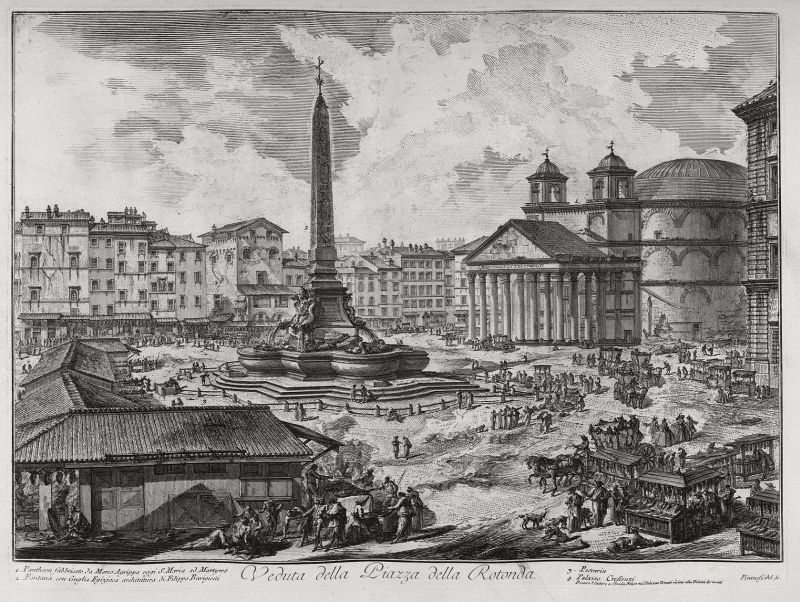
Giovanni Battista Piranesi, Veduta della Piazza della Rotunda, in Le Vedute di Roma, etching, 1751, Metropolitan Museum of Art, New York City, NY, USA.
One of Piranesi’s most famous series of etchings is the Vedute di Roma (Views of Rome), which comprised numerous detailed and imaginative depictions of the city’s ancient landmarks. Through his work, Piranesi not only aimed to document the existing ruins but also to convey a sense of the sublime and awe-inspiring nature of Rome’s ancient past.
Piranesi’s impact extends beyond his immediate peers; he played a pivotal role in shaping our current perception of Ancient Rome. His meticulous reproduction of the ruins, architectural elements, and cityscapes has left an indelible mark on our collective imagination. The influence of Piranesi’s work echoes throughout the history of art, reverberating in representations of Rome, and even in contemporary photographs capturing the essence of ancient architecture. His masterful portrayal has become an enduring lens through which we view and appreciate the grandeur of Rome, creating a visual legacy that transcends time.
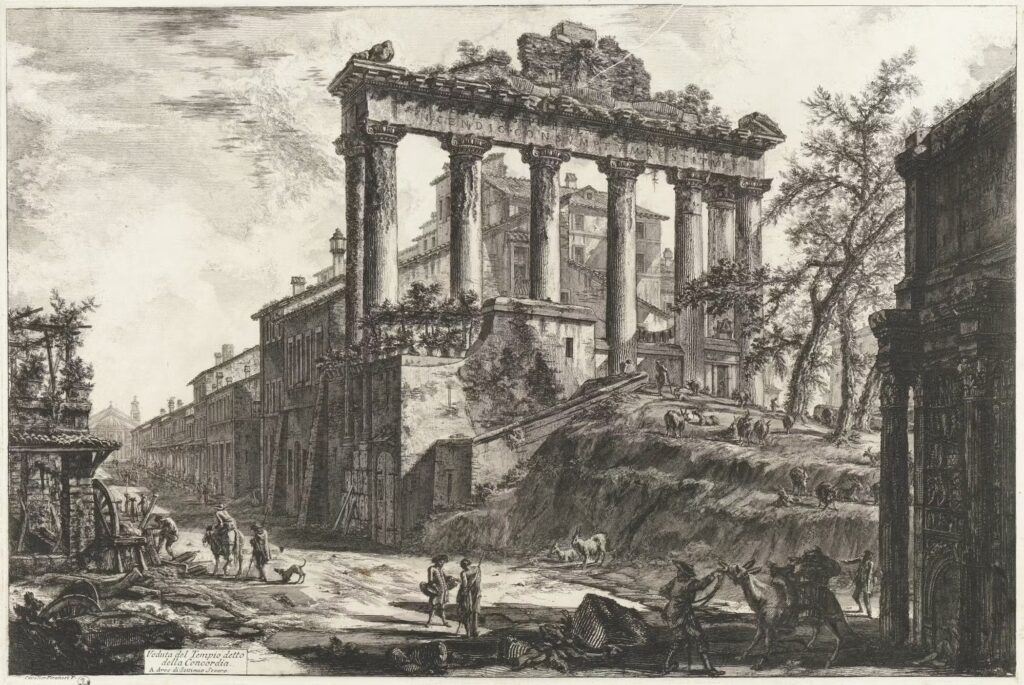
Giovanni Battista Piranesi, Veduta del Tempio detto della Concordia, in Le Vedute di Roma, etching, 1774, Uffizi, Florence, Italy.
Another contribution of Piranesi with his Vedute di Roma is the innovative way in which he represented the city. It does not appear as an empty and soulless place, but rather the monuments and streets are depicted alongside its citizens, providing a lively vision of the city. Undoubtedly, his prints are now a collection of scenes of everyday life of his time, offering a glimpse into Rome as a living, breathing city, capturing the passage of time and the bustling activity of daily life. His etchings serve as windows into the past, allowing viewers to immerse themselves in the sights and sounds of Ancient Rome.
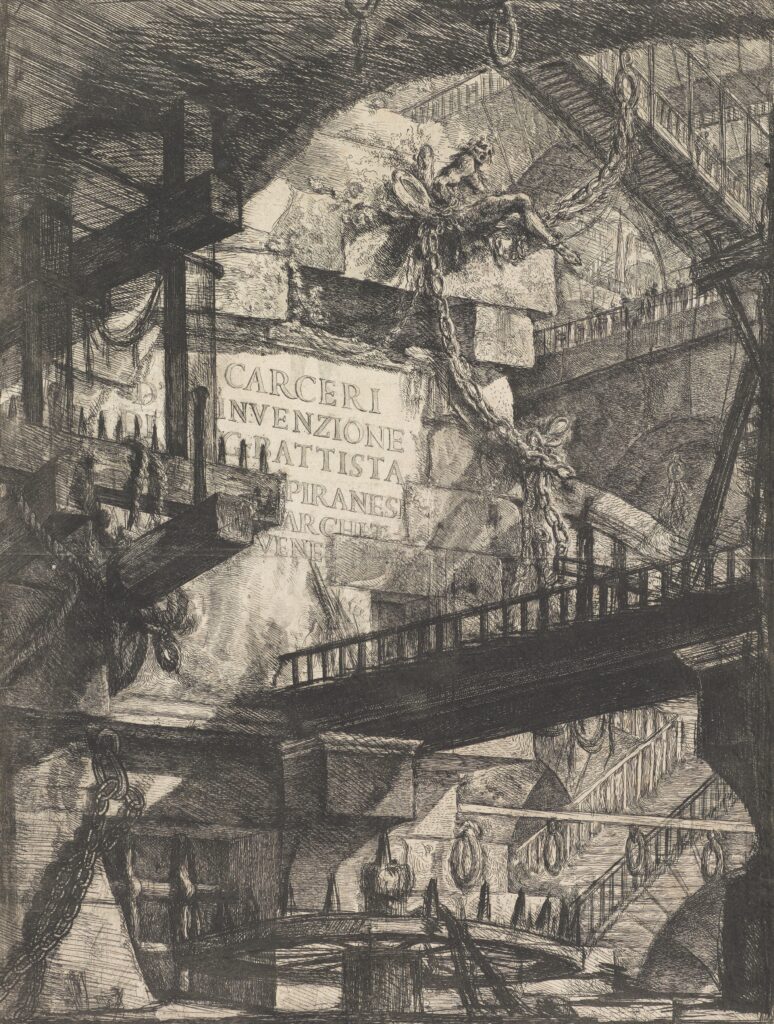
Giovanni Battista Piranesi, Title Plate, in Carceri d’Invenzione, etching, 1761, Princeton University Art Museum, Princeton, NJ, USA.
Around 1745, Piranesi created a collection of prints entitled Carceri d’Invenzione. It consists of 16 prints, produced in both first and second states. These pieces depict sweeping, underground chambers, massive staircases, dungeons, and towering machinery. The depth and distances are distorted. The atmosphere has dense air and columns of smoke with contrasts caused by an overhead light source whose origin is unknown. Tormented and insignificant figures roam through its stairs and chambers. But undoubtedly, the remarkable aspect of this series is the blend of descriptive imagery and imagination. In his imaginary prisons, Piranesi reveals what must occur within a society to maintain a monumental façade, much like what transpired in Rome. These are labyrinthine spaces with no way out.
I need to produce great ideas, and I believe that if I were commissioned to design a new universe, I would be mad enough to undertake it.
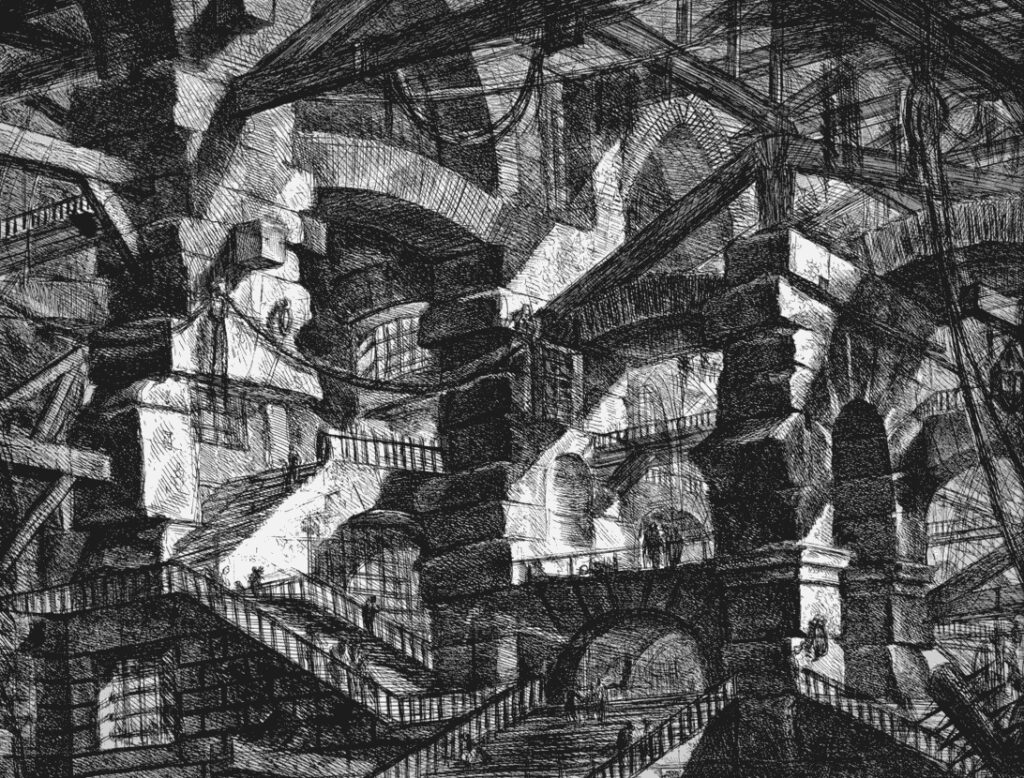
Giovanni Battista Piranesi, Carcere XIV, in Carceri d’Invenzione, etching, 1760, Warsaw University Library, Warsaw, Poland.
Piranesi’s artistic style was characterized by meticulous attention to detail, dramatic use of light and shadow, and a certain romanticized interpretation of the ancient ruins. His etchings were highly influential and contributed to the Neoclassical movement, which drew inspiration from classical art and architecture. However, Piranesi was a master of chiaroscuro. It is in his series Carceri d’invenzione that we can observe this technique the most, where the feeling of desolation and decay is heightened by Piranesi’s dramatic chiaroscuro.
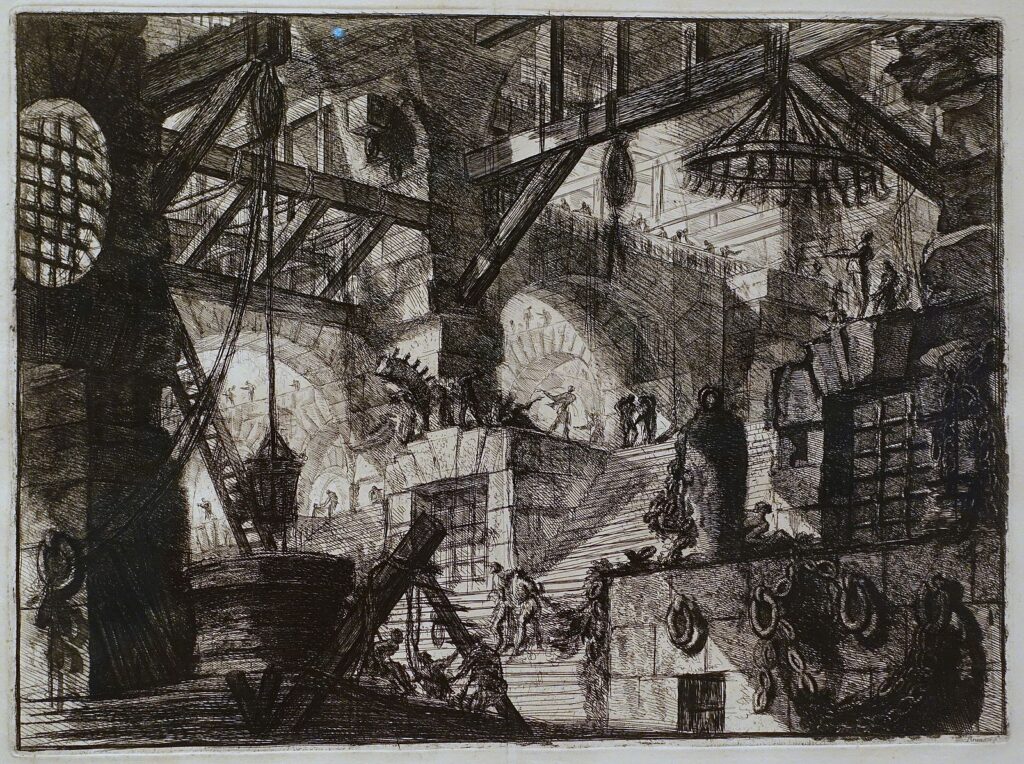
Giovanni Battista Piranesi, The Well, in Carceri d’Invenzione, etching, 1761, Museum Berggruen, Berlin, Germany.
In Piranesi’s Carceri d’Invenzione, we see a departure from conventional depictions of reality, as he creates elaborate and fantastical architectural landscapes that challenge traditional perceptions of space and perspective. These environments, characterized by labyrinthine structures and dramatic lighting, evoke a sense of mystery and intrigue. It is precisely the imaginative fervor combined with his exquisite technique and utopian buildings that makes Piranesi, in addition to being a clear influence on Romanticism, also influential on Surrealism.
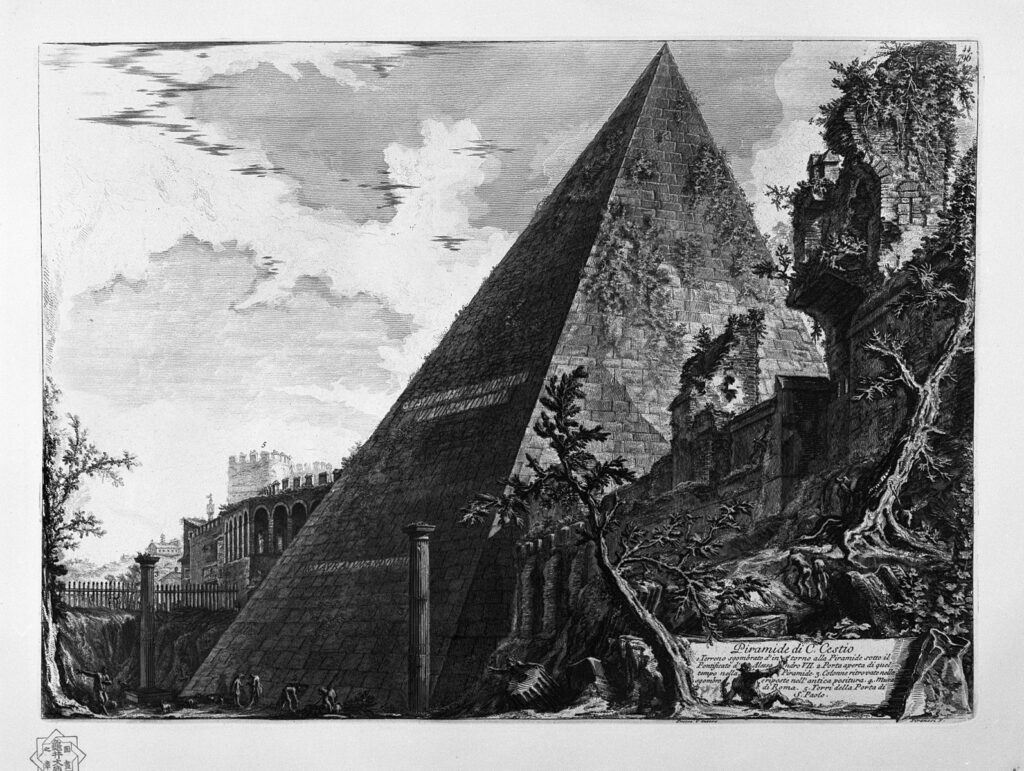
Gianbattista Piranesi, Piramide di C. Cestio, in Vedute di Roma, etching, 1748–1774. Wikimedia Commons (public domain).
The phrase Cop sporcare si trova found in some of his pieces translates to “In staining, one is found” and perfectly encapsulates Piranesi’s artistic approach. It highlights the connection between his dedication to archaeology, his intricate etching process, the importance of the concept of ruin, and his meticulous attention to detail. Piranesi was deeply involved in every single step of producing his etchings: from drawing on copperplates to the final etching.
DailyArt Magazine needs your support. Every contribution, however big or small, is very valuable for our future. Thanks to it, we will be able to sustain and grow the Magazine. Thank you for your help!